Oil paint on panels (1976)
Roger Raveel concentrated on the interaction between painting and his environment: on the one hand we have the work of art which comes out of its frame and on the other, the surroundings which are incorporated into the painting. Consequently, the shape which unfolds on the extreme right hand side of the large painting is repeated on the tympanum above the escalator with this text: “Kom in het bos wonen/Bouwgrond te koop/met toelating om alle bomen te rooien” (Come and live in the forest/ Building land for sale/with the authorisation to cut down all the trees). In this painting Roger Raveel refers to the artist Van Eyck (see the Adam and Eve figures) and James Ensor (see the allusion to the painting “L’entrée du Christ à Bruxelles” (Christ’s arrival in Brussels), creating a work with a social impact. There is also an expression that is typical of Raveel: the figure looking in the painting, the only one to have contours, the “empty” figure, the strongly pictorial elements in the shapes of heads, coats, jumpers, trees and clouds, the addition of objects such as mirrors. “Vive la Sociale” is a piece that has now regained its social importance.
List of links
ROGER RAVEEL (1921 - 2013)
He trained at the Deinze and Ghent Academies, and later went on to develop a very personal style. Together with three other painters he formed the artistic movement “De Nieuwe Visie” (The New Vision), in which familiar and well known things are considered in a newer, fresher way, and are rendered in a more original fashion. For Roger Raveel, the interaction between his works of art and the environment are particularly important. The surroundings are included in the painting using bright colours and empty spaces. Other than group work, Roger Raveel created, “Raveel op de Leie”, an individual work in a spirit of greater social engagement, as a protest against the pollution of the river. He went on to represent Belgium at the 34th Biennale in Venice.
PICTURE

 Twitter
Twitter